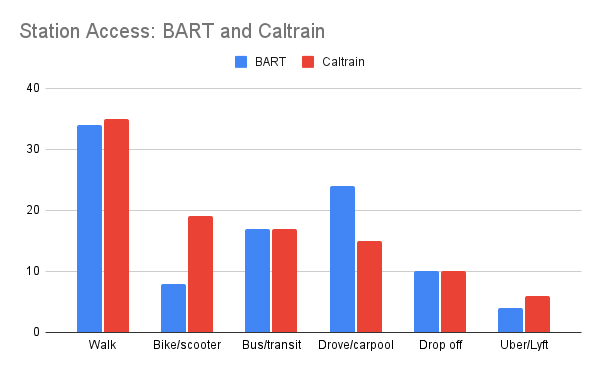Recent customer surveys of BART and Caltrain riders show that walking, bicycling/scootering, and public transportation account for the largest share of station access – 59% for BART, and 71% for Caltrain. For both brands, the share of walking/biking/transit has increased in recent years – up from 50% since 2018 for BART, and up from 64% for Caltrain.
The biggest difference between the services is a higher share of bike/scooter access to Caltrain, and a higher share of driving to the station (24%) for BART.
For rail brands, about 17% of customers access the train via other transit services. It will be interesting to see how the regional pilot for free and reduced price transfers will affect the share of transit access next fall.
Caltrain’s survey includes data about station egress (37% walking, 20% transit, 18% bike/scooter, 26^ private vehicle), while BART’s survey does not publish this data.
Given the consistent increase and difference in the share of bike/scooter access, we wonder if there are more granular patterns at different stations and in different cities’ investments in safe active transportation access. Caltrain publishes the distance that riders travel to and from the station, but BART does not.
Lower car availability among Caltrain riders
A notable change for Caltrain is the decline in the share of riders who had access to a car for the trip. The share of riders who had access to a car declined from 60% in 2016 to 39% in 2022. BART’s survey did not ask this question.

